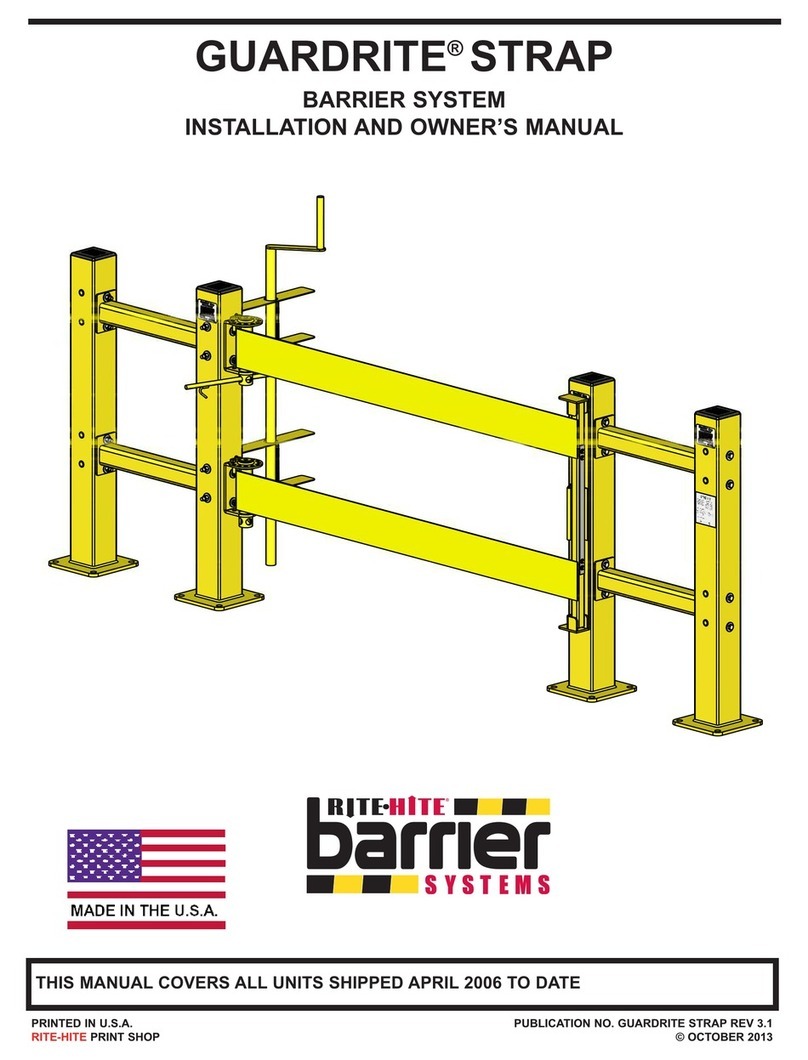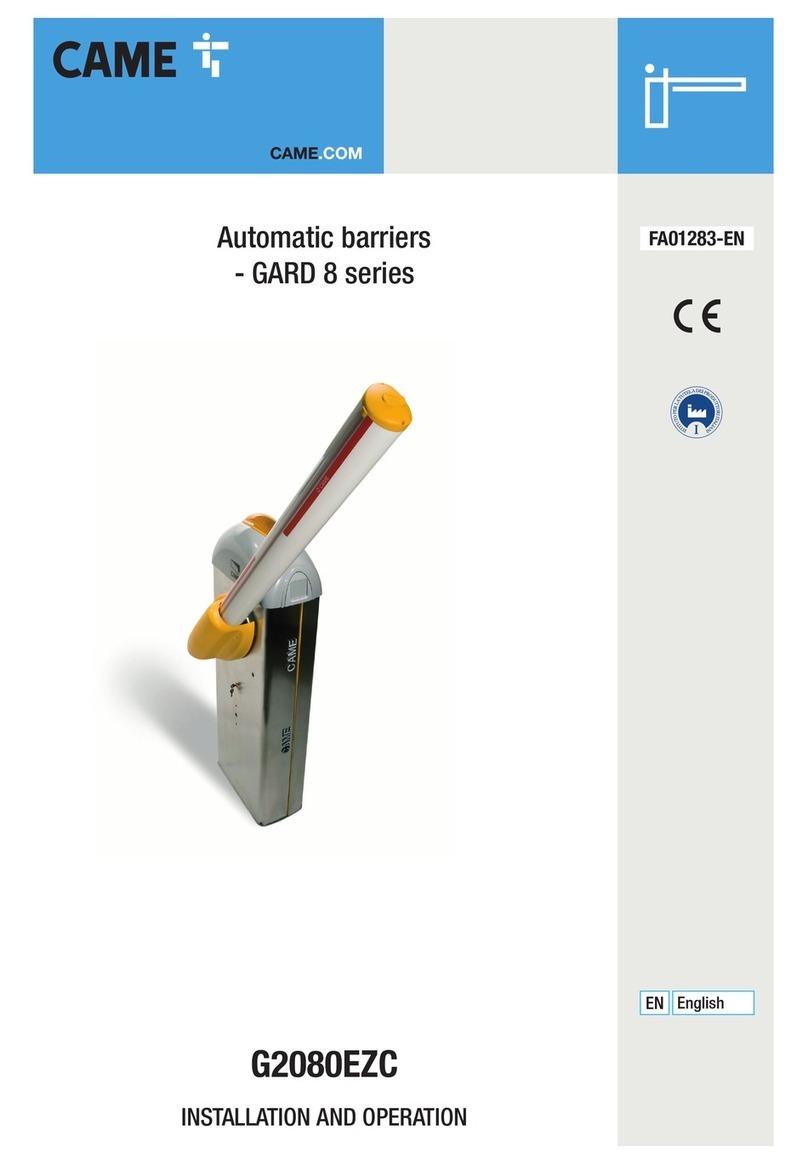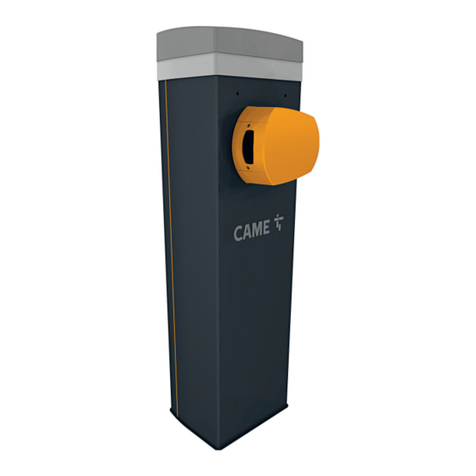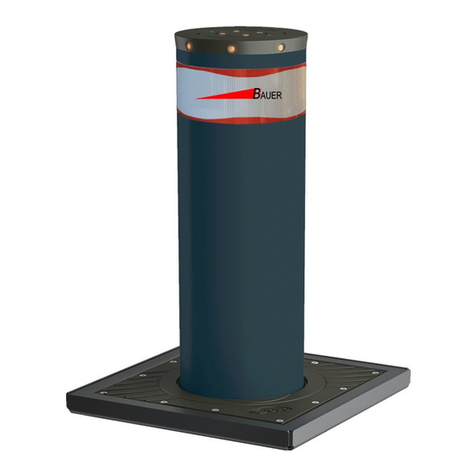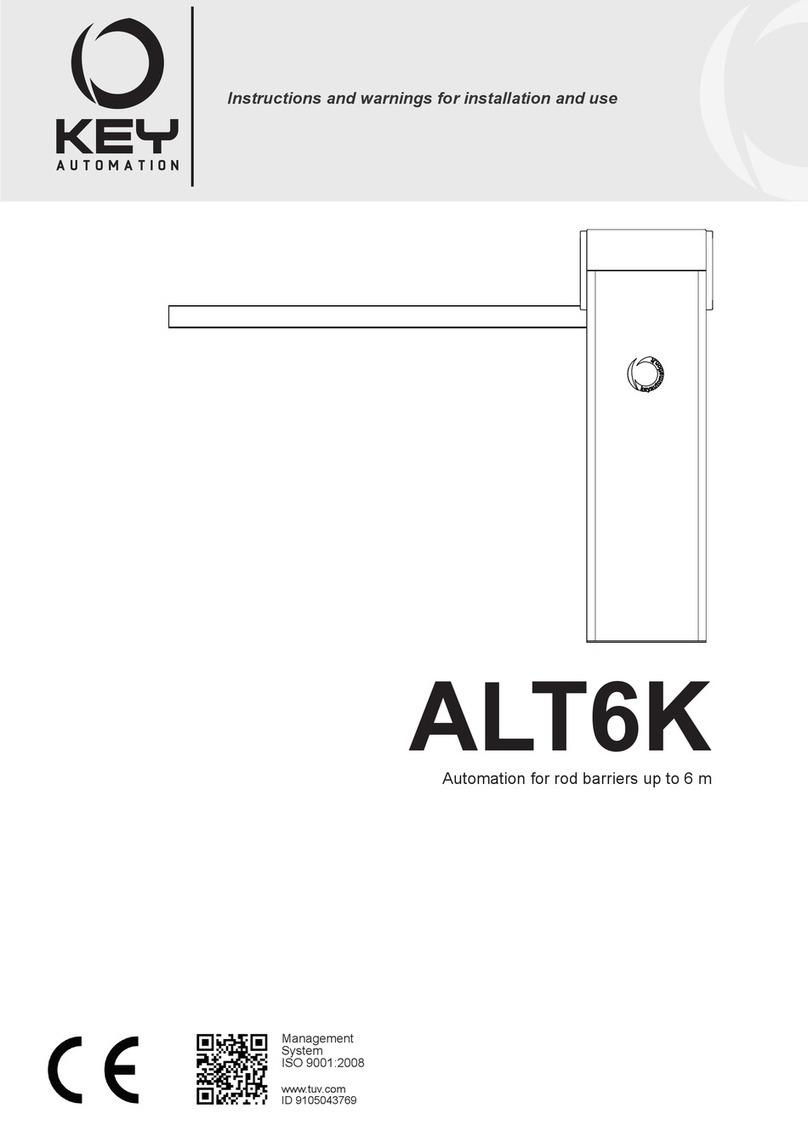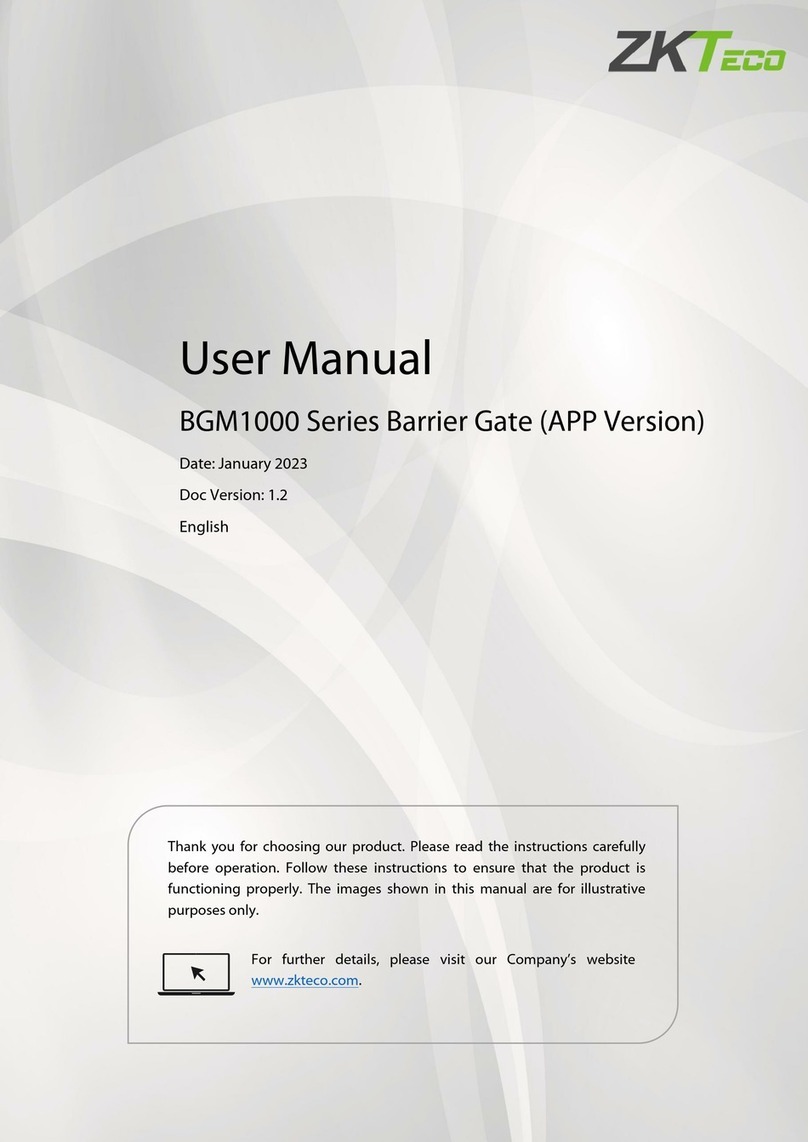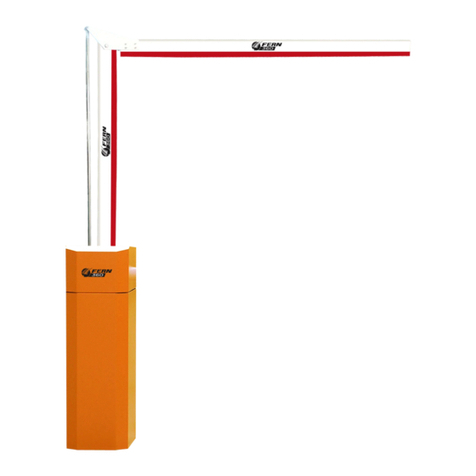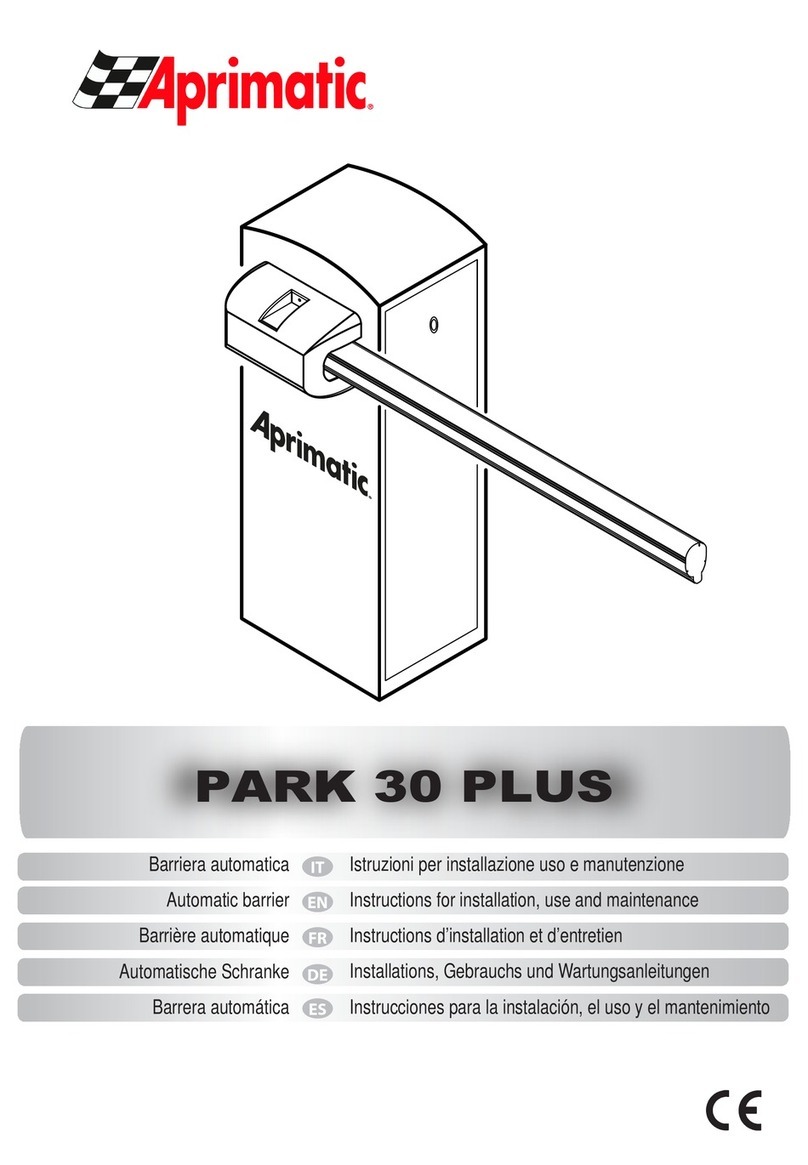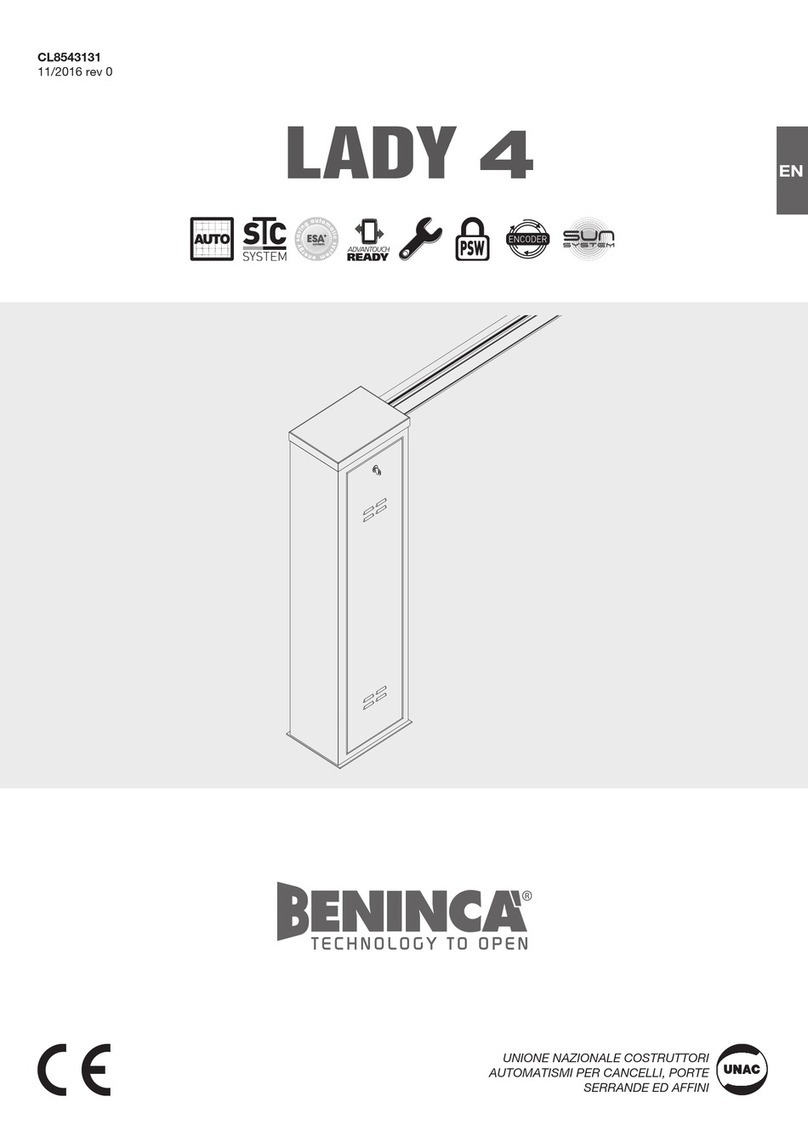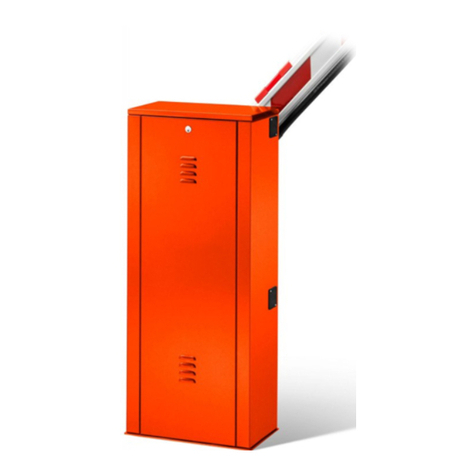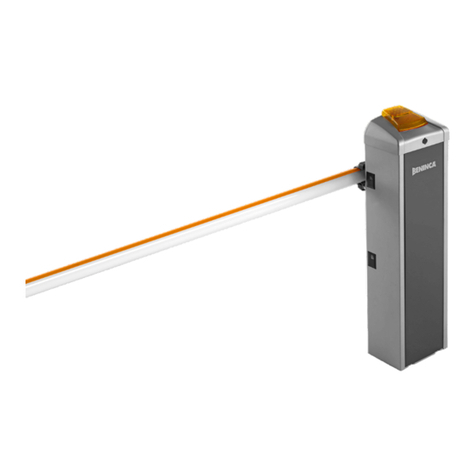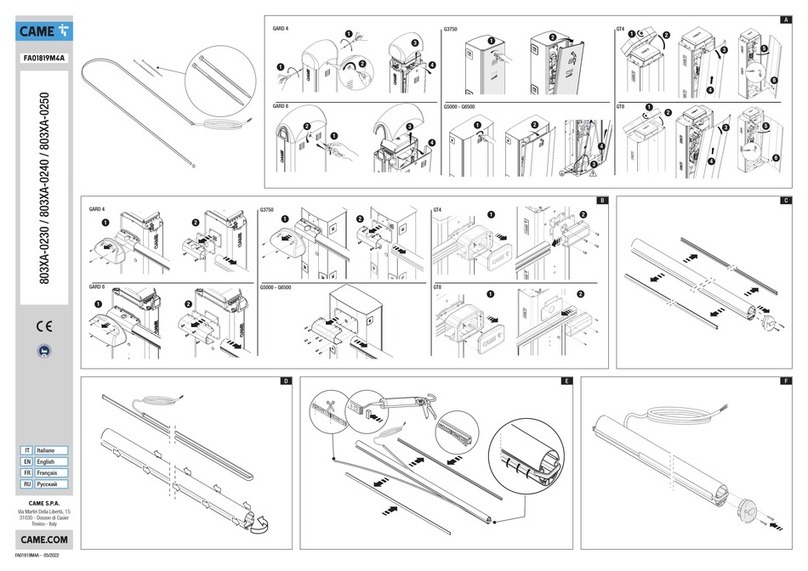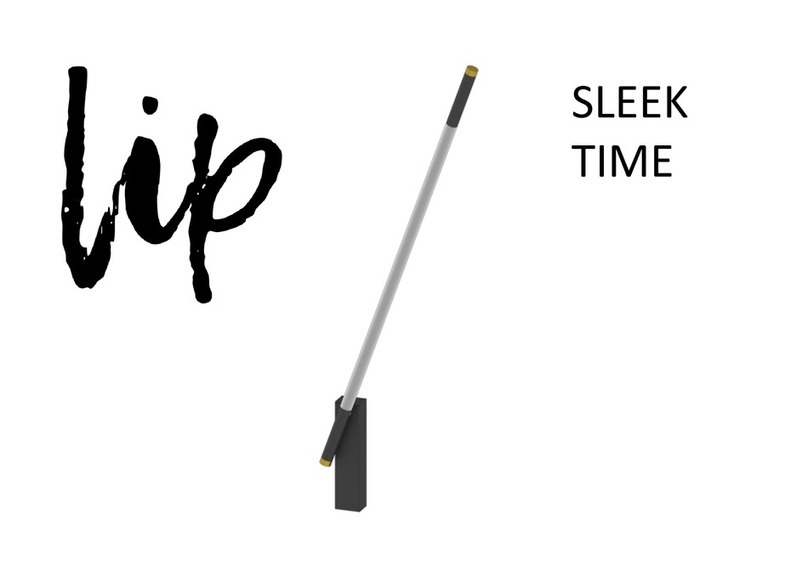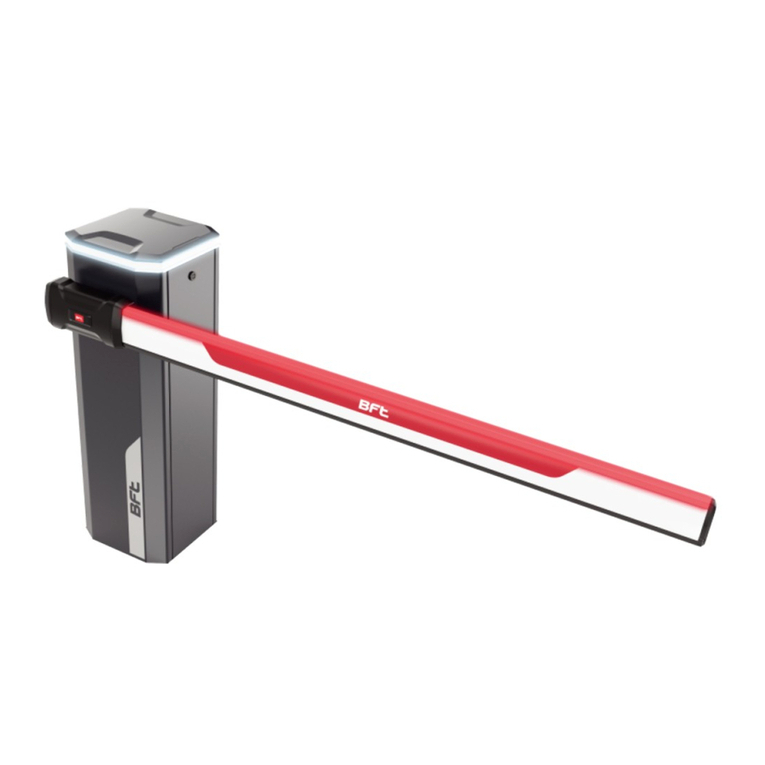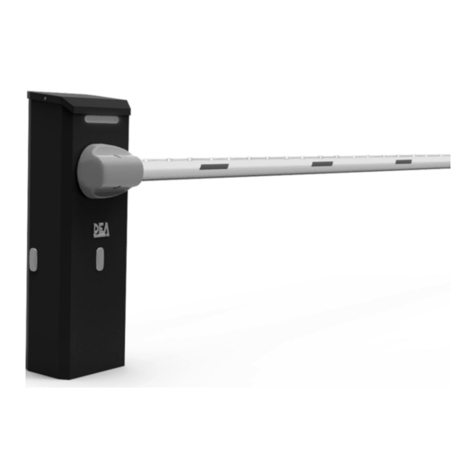
9
INTRODUZIONE
Ci congratuliamo con Voi per aver scelto la barriera stradale
EVA 7.
Tutti gli articoli della vasta gamma Benincà sono il frutto di
una ventennale esperienza nel settore degli automatismi
e di una continua ricerca di nuovi materiali e di tecnologie
all’avanguardia.
Proprio per questo, oggi siamo in grado di offrire dei prodotti
estremamente affidabili che, grazie alla loro potenza, effica-
cia e durata, soddisfano pienamente le esigenze dell’utente
finale.
Tutti i nostri prodotti sono coperti da garanzia.
Inoltre, una polizza R. C. prodotti stipulata con primaria com-
pagnia assicurativa copre eventuali danni a cose o persone
causati da difetti di fabbricazione.
NOTIZIE GENERALI
Di robusta fabbricazione ma tuttavia con un design innova-
tivo e piacevole, le barriere stradali EVA, grazie al motore in
24Vdc si prestano al servizio intensivo. L’installazione e la
messa a punto sono di facile esecuzione.
Dotata di uno sblocco manuale molto semplice ed intuitivo,
la barriera è predisposta per il montaggio di batterie tampo-
ne che ne consentono il funzionamento anche in mancanza
dell’alimentazione di rete.
L’asta in alluminio verniciato è predisposta per l’applicazione
di tutti gli accessori, dei dispositivi di segnalazione e di sicu-
rezza. In caso di contatto dell'asta con un ostacolo un sen-
sore amperometrico inverte immediatamente il movimento.
La centrale di comando è posizionata sulla parte superiore
della barriera per agevolare i collegamenti elettrici.
DATI TECNICI EVA 7
Alimentazione
Alimentazione motore
Potenza assorbita
Assorbimento
Coppia
Intermittenza di lavoro
Grado di protezione
Temp. funzionamento
Rumorosità
Lubrificazione
Peso
230Vac 50Hz
24Vdc
310 W
1.6 A
285 Nm
uso intensivo
IP 44
-20°C / +50°C
<70 dB
Agip GR MU EP/2
105kg
VELOCITA' DI APERTURA
Lunghezza
asta
Alimentazione
motore
Tempo
di apertura
(s)
Tempo
di chiusura
(s)
5m 26 Vdc 3 4
da 5 a 6 m 23 Vdc 4 5
da 5 a 7 m 18 Vdc 5 6
La velocità di apertura della barriera varia a seconda della tensione di
alimentazione selezionata sul trasformatore della centrale di comando.
I tempi indicati comprendono i rallentamenti.
IMPORTANTE:
Rispettare i valori di tensione indicati per le varie lunghezze di asta.
Valori di tensione troppo elevati, provocando velocità eccessive,
possono essere causa di danni all'automazione.
DIMENSIONI
FIG.1
Dimensioni di ingombro espresse in mm.
La lunghezza dell'asta può variare da un minimo di 5m ad
un massimo di 7m.
Poiché circa 30cm sono necessari al fissaggio dell'asta sulla
barriera ne risulta un passaggio utile variabile da 4,70m a
6,70 come evidenziato in Fig.1
Sulla barriera sono previste delle predisposizioni per acces-
sori opzionali (fotocellule, selettori, ecc), applicare le apposite
mascherine di copertura fornite in dotazione (Rif. A).
BARRIERA DESTRA/SINISTRA
FIG.2
Viene definita destra una barriera che, vista dal lato porta, va
ad impegnare il passaggio sul lato destro; viceversa è sini-
stra. La barriera EVA 7 è normalmente fornita come barriera
destra (EVA7-DX), in ogni caso con poche semplici operazioni
è possibile l'inversione del verso di apertura (EVA7-SX), la
procedura è descritta nel paragrafo "Predisposizione barriera
destra-sinistra".
APERTURA
FIG.3
L'accesso alle parti elettriche e meccaniche della barriera è
protetto da una chiusura a serratura con chiave personaliz-
zata, procedere come segue:
1 rimuovere i due dadi D
2 inserire la chiave nella serratura sul lato della porta, e ruo-
tarla in senso antiorario
3 alzare la parte frontale del coperchio
4 sfilare il coperchio
E' ora possibile accedere alla centrale di comando, posizio-
nata sotto il coperchio e alle parti meccaniche della barriera,
rimuovendo la portina frontale.
POSA DELLA PIASTRA DI FONDAZIONE
VE.P650 (OPZIONALE)
FIG.4
Dopo aver predisposto il passaggio dei cavi (alimentazione
di rete, accessori, ecc), posizionare la piastra di fondazione
facendo riferimento alle quote indicate.
In dotazione sono fornite delle staffe a cementare (rif.S) da
fissare alla piastra di fondazione mediante 4 viti M12x50
(rif.V).
Verificare che la piastra di fondazione sia perfettamente a
livello (rif L), quindi fissare la barriera per mezzo dei dadi D
e relative rondelle R.
SCELTA DELLE MOLLE DI BILANCIATURA
E ACCESSORI UTILIZZABILI
FIG.5
Prima di procedere al tensionamento della molla, è neces-
sario scegliere il tipo di molle da utilizzare.
Sono disponibili due tipi di molle, differenti per la loro
lunghezza: una corta da 364mm (EVA.KM) e una lunga
da 480 mm (standard).
Rilevare nella tabella 1 il tipo di molle necessarie in base alla
lunghezza asta ed alla presenza o assenza di accessori.
Di fabbrica vengono installate 2 molle da 480mm, utilizza-
bili nella maggior parte delle tipologie di installazione.
Nel caso sia necessaria una molla da 360mm è neces-
sario approvvigionarsi preventivamente, in quanto non
